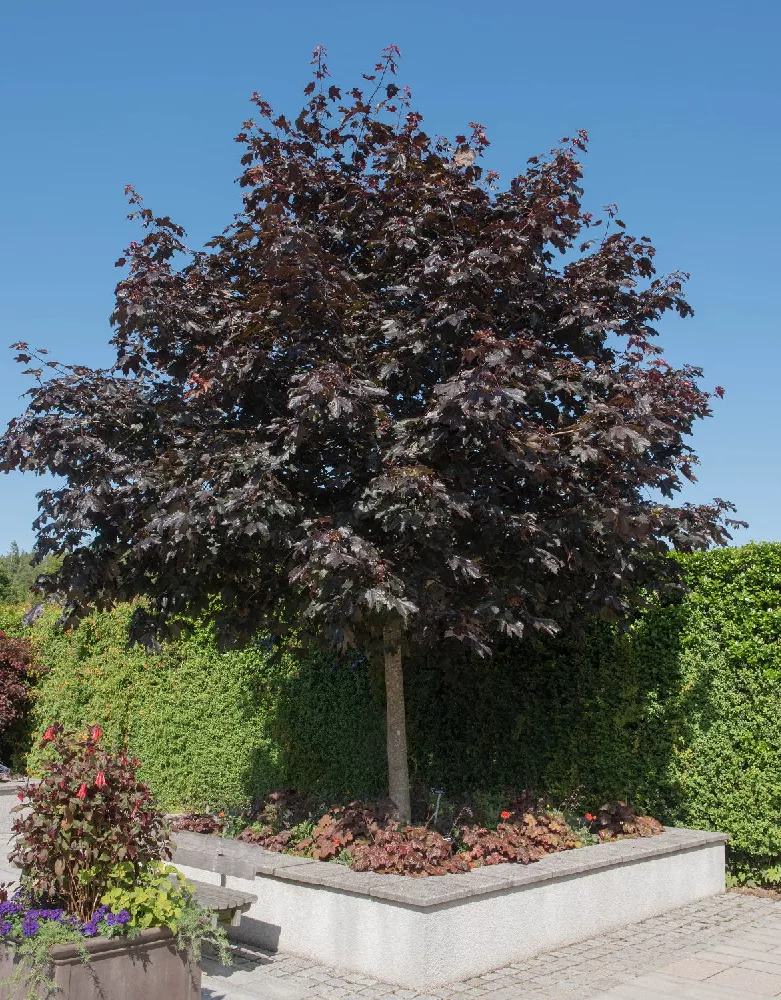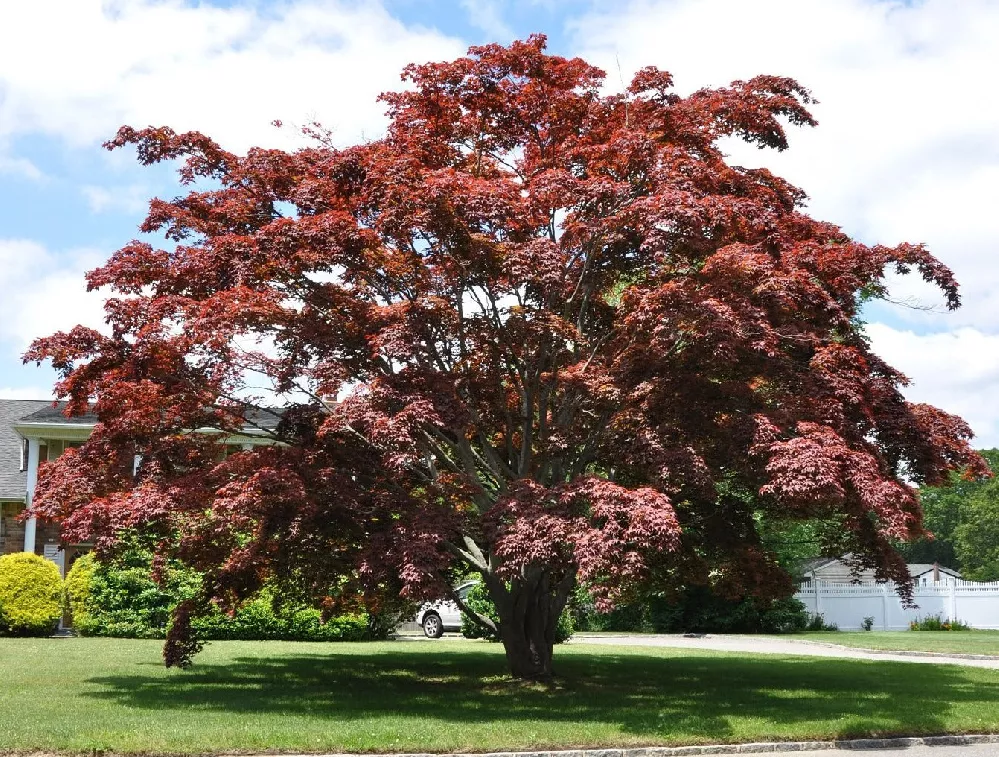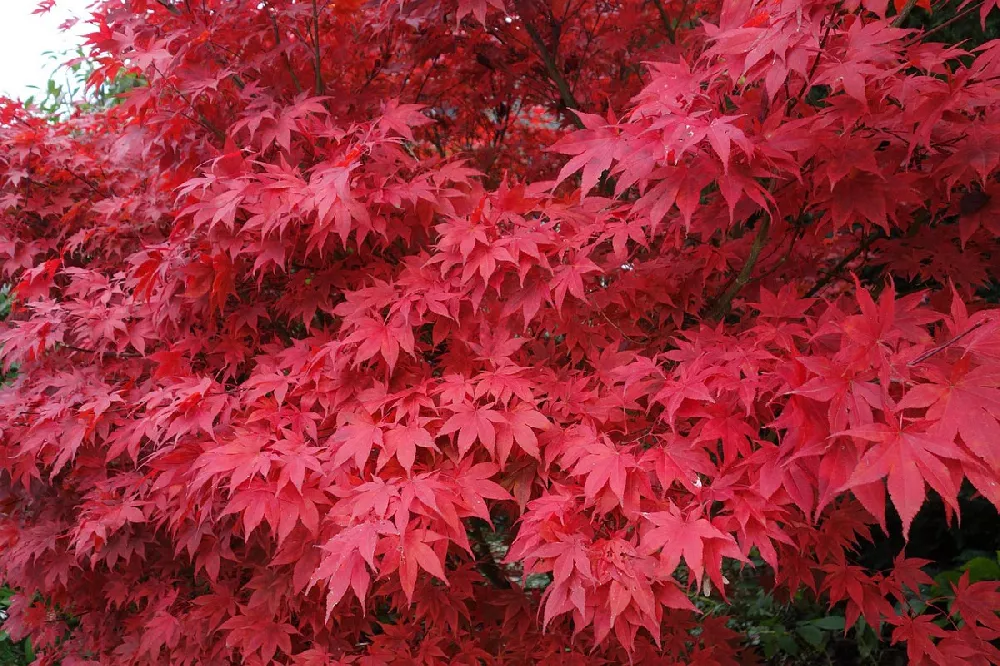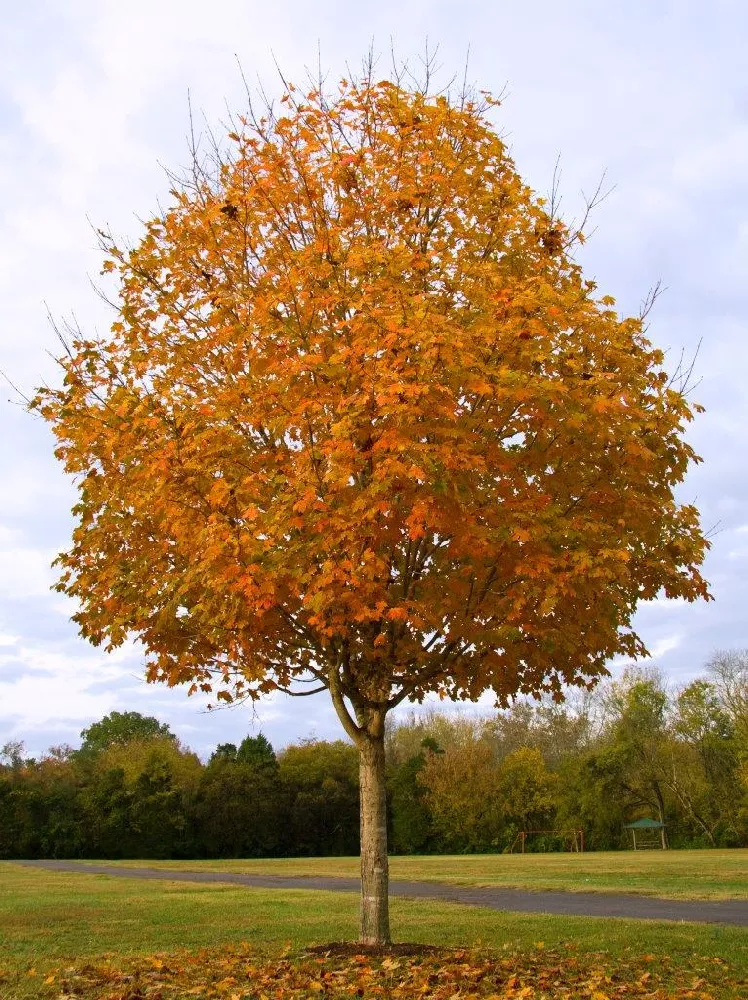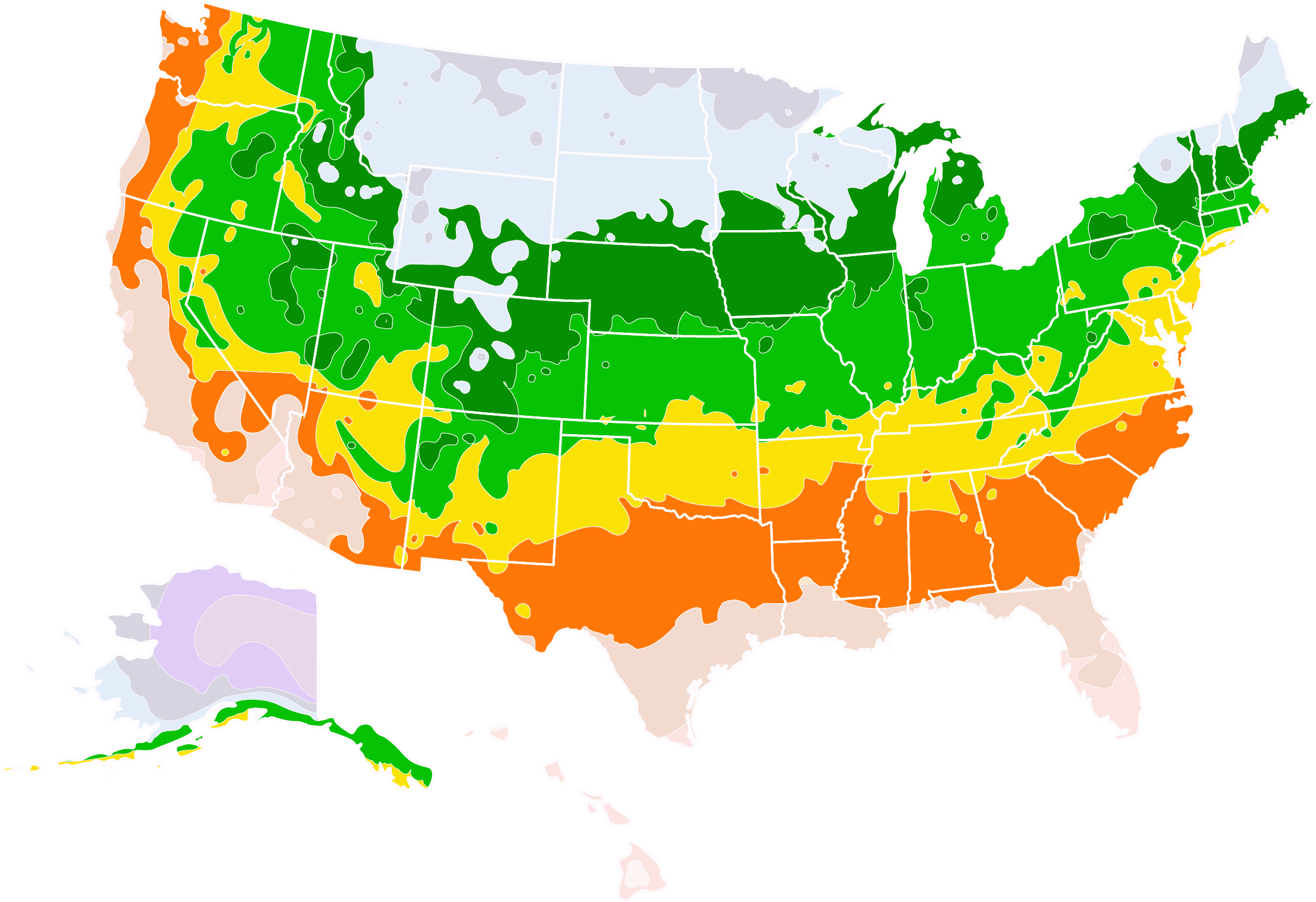- Home >
- Maple Trees >
- Crimson Queen Japanese Maple
Crimson Queen Japanese Maple for Sale - Buying & Growing Guide
Adding beautiful foliage to your garden without having to do too much maintenance is what's possible when you plant a crimson queen Japanese maple. This cultivar, known botanically as Acer palmatum 'Crimson Queen,' holds the deep red leaf color that Japanese maples are so well known for. This plant also has a dwarf size and an interesting weeping habit that make it a unique addition to any garden bed in USDA zones 5-8.
- The crimson queen Japanese maple tree has a lovely weeping growth habit.
- The foliage of this plant is dark red throughout the growing season.
- This plant's dwarf size makes it manageable and easy to plant in nearly any space.
Enter your zip code to find nearby stores that may carry this plant.
Plant Care
Sunlight

The Crimson Queen Japanese Maple can grow in either full sunlight or partial shade.
Watering
Water this plant about once per week during the active growing season.
Fertilizing

Use an organic material, such as compost, or a low-nitrogen fertilizer once per year in spring.
Planting and Care
Planting instructions
The crimson queen Japanese maple tree can live where there is full sunlight. However, it is ideal to plant this tree in an area of partial shade, especially if you live in the warmer zones of this plant’s growing range. Crimson queen Japanese maple trees will adapt best to soils that are slightly moist, somewhat acidic, nutrient-rich and well-draining. When those conditions are in place, you can begin planting by digging a hole that is as deep as the root ball is tall and at least twice as wide.
Watering and nutrients
Once you have planted your crimson queen Japanese maple tree, you should water it multiple times per week during the first growing season. After your plant has established itself, your goal should be to maintain a moderate amount of soil moisture without allowing the soil to become waterlogged. Often, this means watering about once per week. To feed this tree, you should apply a fertilizer that is relatively low in nitrogen once per year in the early spring.
Pollination
Pollination for a crimson queen Japanese maple tree is typically not of any concern for most gardeners, as this plant does not produce an edible harvest. Also, the flowers of this plant can be so small that you may not notice them at all. However, while small, those flowers are capable of attracting pollinator insects. Since this tree is self-fertile, it is easy for a single specimen to pollinate itself. When this occurs, your crimson queen Japanese maple will develop a set of samaras as its fruits.
Pruning
You should avoid over-pruning your crimson queen Japanese maple tree and any other Japanese maple tree variety you may grow. In most cases, pruning your Japanese maple too much will cause it to quickly produce new growth that is often weak and does not contribute to this plant’s overall health or form. Likewise, the crimson queen Japanese maple tree often creates an attractive weeping shape on its own, which means that shaping is not usually necessary for this plant.
Pests, diseases and animals
Many Japanese maple trees can face challenges related to diseases. However, the good news about the cultivar known as the crimson queen Japanese maple tree is that it often proves to have great disease resistance, which means that it is likely to remain healthy throughout its entire life. With that said, it is possible for pests to infest your crimson queen Japanese maple tree. The most common insects that will harm this tree include aphids, mealybugs, mites and Japanese beetles.
Achieving maximum results
Partial shade becomes increasingly necessary for the crimson queen Japanese maple the farther south you choose to grow it. In warmer zones, afternoon shade is especially beneficial for this plant. When a crimson queen Japanese maple tree receives too much sunlight, it is possible for the normally deep red foliage to lighten and turn green. While this does not mean that your plant’s health is at critical risk, the fading color can detract significantly from this plant’s overall appearance.
FAQs
Does the crimson queen Japanese maple tree have deep roots?
The crimson queen Japanese maple tree is a smaller cultivar that grows to be about 8 feet tall. Despite that small size, this plant can develop a surprisingly large root system. At maturity, the roots of a crimson queen Japanese maple tree can spread up to 12 feet and may penetrate about 3 feet or more down into the soil. That extensive root system can make it difficult to transplant this tree when it is mature.
Is the crimson queen Japanese maple tree a fast-growing plant?
Compared to most trees, the crimson queen Japanese maple tree is a fast-growing plant. At maturity, this plant will be about 8-10 feet tall and wide. However, when the ideal growing conditions are in place and when you give this plant the right care, it can reach its full size in just about five years of growth. In a typical season, you may see your crimson queen Japanese maple tree add about 2 feet of new growth.
When was the crimson queen Japanese maple tree created?
The original version of the plant we know as the Japanese maple, or Acer palmatum, is native to areas of Japan and surrounding Asian countries. However, many versions of this species have come into being via cultivation. The crimson queen Japanese maple is an example of a cultivar that emerged in the United States. This plant first arrived in 1965 and quickly became one of the most popular small Japanese maple varieties.
Compare Similar Products
You can't add more Product Name - Product size to the cart.
OK



